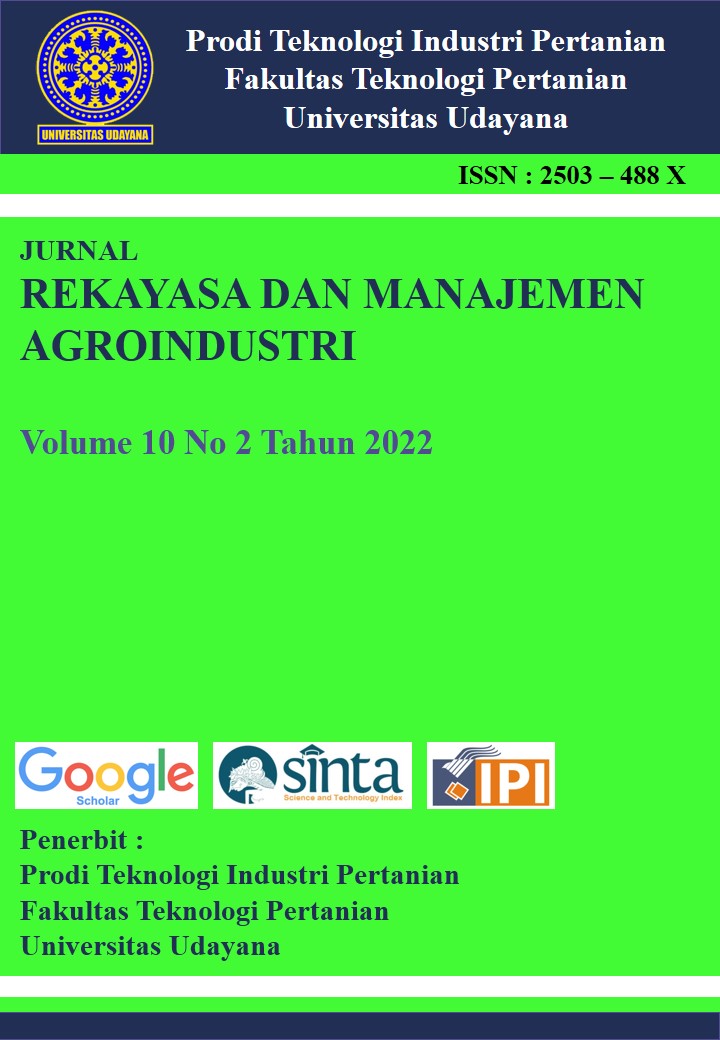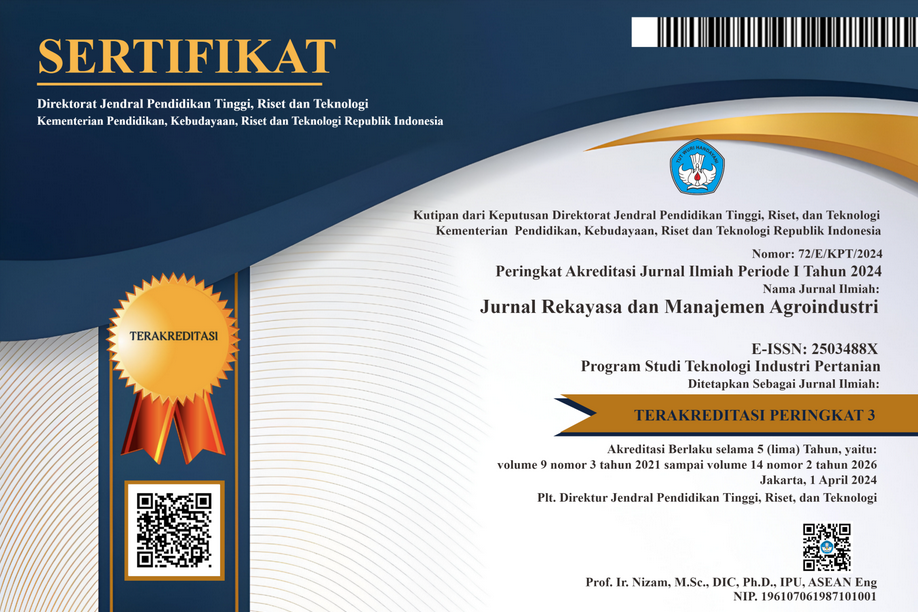KAJIAN PENERAPAN GOOD MANUFACTURING PRACTICE (GMP) DI INDUSTRI KERUPUK IKAN SRESEH KABUPATEN SAMPANG MADURA
Abstract
The demands of today's consumers are not only for quality but also for safe food. To improve product safety, “Industri Kecil Menengah” (IKM) must start implementing the basic level of feasibility, namely Good manufacturing practice (GMP). GMP is a basic feasibility standard that can be used to assess the level of industry feasibility. The purpose of this study was to determine the basic feasibility level of the two fish cracker industries located in Sreseh District, Sampang Regency. The research was conducted by direct observation in the field and interviews with the company's management. There are 14 elements of GMP whose feasibility level is measured based on the guidelines issued by the Food and Drug Administration (BPOM). The results of the assessment show that serious and critical discrepancies are still found so that both industries are included in the level IV category. To improve product safety, SMIs should start implementing the basic level of eligibility, namely GMP.
Downloads
References
[2] R. Latif, A. Dirpan, and S. Indriani, “The Status of Implementation of Good Manufacturing Practices (GMP) Shredded Fish Production in UMKM Az-Zahrah, Makassar,” IOP Conf. Ser. Earth Environ. Sci., vol. 101, no. 1, pp. 3–9, 2017, doi: 10.1088/1755-1315/101/1/012040.
[3] B. Ristyanadi and D. Hidayati, “Kajian Penerapan Good Manufacturing Practice ( Gmp ) Di Industri Rajungan Pt . Kelola Mina Laut Madura,” Agrointek, vol. 6, no. 1, pp. 55–64, 2012, [Online]. Available: https://journal.trunojoyo.ac.id/agrointek/article/view/1954.
[4] BPOM, “Badan Pengawas Obat dan Makanan Republik Indonesia. Jakarta: Badan Pengawas Obat dan Makanan,” Jakarta Badan Pengawas Obat dan Makanan, pp. 1–16, 2010.
[5] E. Masrifah, B. P. Noorachmat, and A. Sukmawati, “Kesesuaian Penerapan Manajemen Mutu Ikan Pindan Bandeng (Chanos chanos) Terhadap Standar Nasional Indonesia,” Manaj. IKM, vol. 10, no. 2, pp. 163–172, 2015, doi: 10.29244/mikm.10.2.163-172.
[6] R. Fitriana and W. Kurniawan, “Pengendalian Kualitas Pangan Dengan Penerapan Good Manufacturing Practices (Gmp) Pada Proses Produksi Dodol Betawi (Studi Kasus Ukm Mc),” J. Teknol. Ind. Pertan., vol. 30, no. 1, pp. 110–127, 2020, doi: 10.24961/j.tek.ind.pert.2020.30.1.110.
[7] I. Hanidah, A. T. Mulyono, R. Andoyo, E. Mardawati, and S. Huda, “Penerapan Good Manufacturing Practices Pada Produksi Sistik Ebi Sebagai Upaya Peningkatan Kualitas Produk Olahan Ikan di Pesisir Eretan - Indramayu,” Agricore J. Agribisnis dan Sos. Ekon. Pertan. Unpad, vol. 3, no. 1, 2018, doi: 10.24198/agricore.v3i1.17585.
[8] R. Purwasih, “Implementasi Aspek GMP, SSOP, dan Sistem HACCP Pada UMKM Oncom Dawuan,” Agrointek J. Teknol. Ind. Pertan., vol. 15, no. 1, pp. 69–79, 2021.
[9] Y. H. Sipahutar, S. Masengi, and V. Wenang, “Kajian Penerapan Good Manufacturing Practise dan Sanitation Standar Operation Procedure pada Produk Pindang Air Garam Ikan Tongkol TONGKOL (Euthynnus affinis ) dalam uapaya meningkatkan Keamanan Pangan di Kabpaten kendal, Jawa Tengah,” Pros. Simp. Nas. Ikan dan Perikanan, Masy. Iktiologi Indones. 2017, pp. 1063–1075, 2017.
[10] R. Rezki, “Evaluasi Penerapan CPPB-IRT Industri Rumah Tangga Pangan ( IRTP ) Minuman Tradisional di Desa Mekarharja ( Evaluation of the Application of CPPB-IRT in Traditional Beverages Home Industry in Mekarharja Village ),” J. Pus. Inov. Masy., vol. 2, no. 1, pp. 28–33, 2020.
[11] A. U. Albab Al Umar, M. T. L. Mustofa, D. Fitria, A. M. Jannah, and Y. N. Arinta, “Pengaruh Label Halal dan Tanggal Kadaluarsa Terhadap Keputusan Pembelian Produk Sidomuncul,” Jesya (Jurnal Ekon. Ekon. Syariah), vol. 4, no. 1, pp. 641–647, 2021, doi: 10.36778/jesya.v4i1.348.

Ciptaan disebarluaskan di bawah Lisensi Creative Commons Atribusi-BerbagiSerupa 4.0 Internasional.
Seluruh artikel di Jurnal ini dapat disebarluaskan atas tetap mencantumkan sumber yang syah. Identitas judul artikel tidak boleh dihilangkan. Penerbit tidak bertangggung jawab terhadap naskah yang dipublikasikan. Isi artikel menjadi tanggung jawab Penulis.














